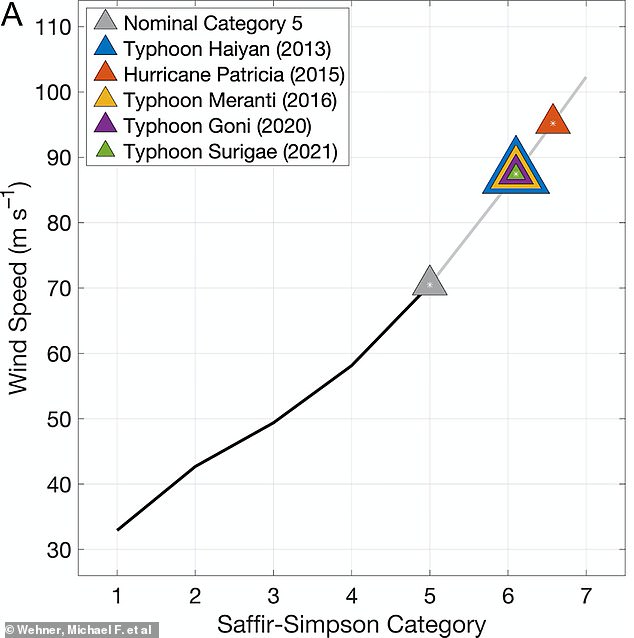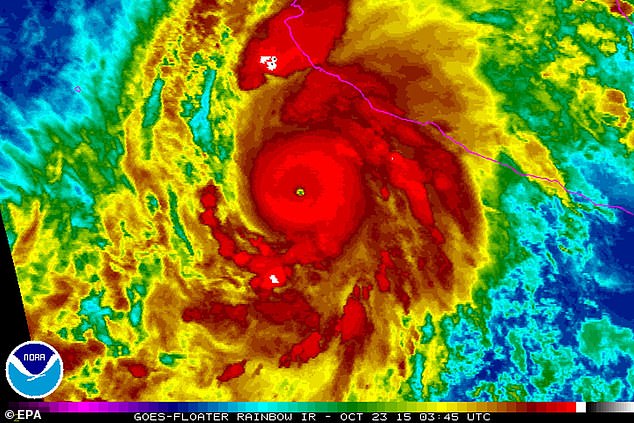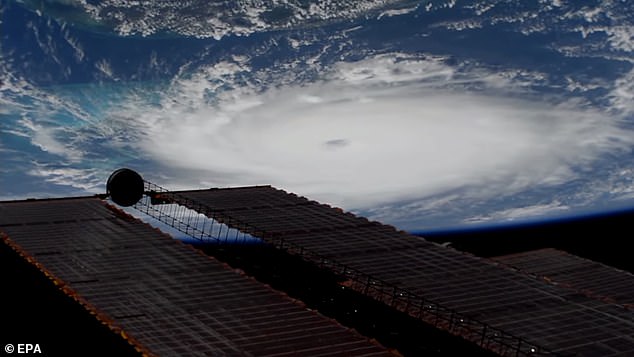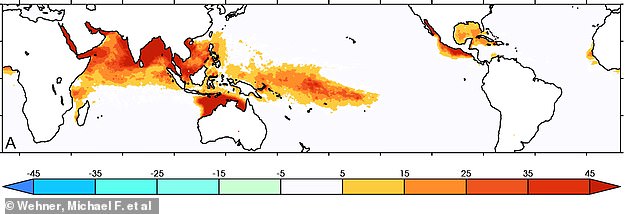Climate change could trigger a wave of ‘mega-hurricanes’ with catastrophic winds of up to 310 km/h – as fast as a Lamborghini Gallardo
Climate change could trigger a new wave of “mega-hurricanes” so powerful that scientists say a new category is needed to measure them.
Since the 1970s, the National Hurricane Center has used the Saffir-Simpson Wind Scale to measure hurricanes on a scale of one to five.
But now scientists at Lawrence Berkeley National Laboratory say the scale should be expanded to include category six hurricanes.
With sustained winds of more than 309 km/h, the hurricanes in this new category have wind speeds as fast as a Lamborghini Gallardo.
Only five storms are believed to have been included in this new category in the past decade, but researchers say the risk will increase as the climate warms.
Researchers say storms are becoming so powerful due to climate change that massive hurricanes like Hurricane Patricia, pictured here over the Atlantic Ocean in 2015, should be created in a new category

The researchers propose a new hypothetical category six for measuring hurricanes. These storms have packed winds of over 309 km/h, as fast as a Lamborghini Gallardo
Hurricanes, also called tropical storms or typhoons, are currently categorized by their sustained wind speeds.
Category 1 hurricanes have wind speeds of 70 mph (119 km/h).
In category three, which is considered a risk of serious damage to life and property, there are sustained winds between 178 and 208 km/h.
Meanwhile, Category Five, which is reserved for the most destructive storms, starts at 252 km/h (157 mph) but is open-ended.
The reason the scale stops here is that it is meant to represent property damage and it was believed that a category five hurricane would completely destroy any structure in its path.
Although In their article, published in Proceedings of the National Academy of Sciencessuggest Dr. Wehner and his co-author that the scale should be expanded to include a hypothetical category six.
He says: ‘Our motivation is to reconsider how the openness of the Saffir-Simpson scale can lead to underestimation of risk, and in particular how this underestimation becomes increasingly problematic in a warming world.’
By following the pattern of gaps between the previous categories, the researchers established the lower limits for category six and looked through previous weather data to see if any hurricanes would qualify.
In an analysis of data from 1980 to 2021, they found that five storms would have been classified as category six and that all occurred in the last nine years.
These five storms include some of the most powerful and destructive hurricanes in recent history.

This graph shows how the Saffir Simpson category compares to wind speed. The colored triangles show the storms that the researchers would classify as category six. As you can see, they fall well outside the category five limit (shown as a gray triangle)

This diagram shows Hurricane Patricia as it approaches the coastline of Mexico. At the center of the storm, shown in dark red, wind speeds were 200 mph (320 km/h), which would make this a category six hurricane
For example, Hurricane Patricia had winds of 200 miles per hour before making landfall in the Gulf of Mexico.
Typhoon Haiyan, meanwhile, killed thousands of people when it struck the Philippines in 2013.
The authors note that even at the time, Typhoon Haiyan was so powerful that many called for it to be classified as category six.
According to co-author Dr. James Kossin of the First Street Foundation, the Saffir-Simpson Windscale is far from perfect as a means of communicating hurricane risk.
This is because much of the damage and fatalities caused by hurricanes are not due to wind speed, but to storm surge, flooding and heavy rainfall.
Dr. Kossin says: ‘Changes in reporting are needed to better inform the public about inland flooding and storm surges, phenomena for which a wind-based scale is only superficially relevant.
“Our results are not intended to suggest changes on this scale, but rather to raise awareness that the risk of wind hazards from storms currently classified as Category 5 has increased and will continue to increase under the influence of climate change.”

Category five storms, like Hurricane Dorian, seen here from the International Space Station, are already extremely dangerous. But the researchers warn that even more powerful storms are likely to become more common in the future as the planet warms

This chart shows how many days wind speeds were above ‘category six’ levels between 1979 and 2019. The darker red areas had more days of category six winds, such as Australia’s northwest coast, which in some cases had as many as 45 days. areas
And as the climate continues to warm, storms that would fall into category six are likely to become more common.
Typhoons, hurricanes and tropical storms, which are all essentially the same weather phenomena, are caused when warm, moist air rises from the ocean.
As human-induced climate change increases global temperatures, the seas and oceans become hotter in areas where these storms typically occur.
This means there is more heat energy to power the storm, leading to more powerful and dangerous storms.
According to the researchers’ simulations, a temperature increase of just 2°C above pre-industrial levels could make storms significantly more common.
At these warming levels, the risk of a category six storm increases by as much as 50 percent near the Philippines and doubles in the Gulf of Mexico.
Dr. Wehner says: ‘Even under the relatively low global warming targets of the Paris Agreement, which aims to limit global warming to just 1.5°C above pre- industrial temperatures, the increased risk of Category 6 storms is significant. in these simulations.’
